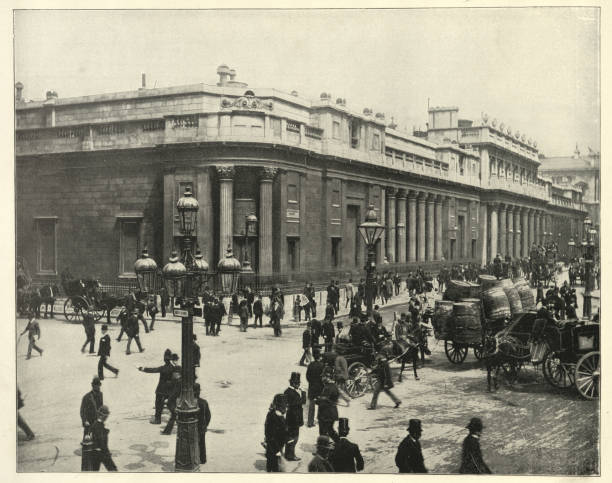By the late 17th century, England was facing severe financial instability. Decades of war, rising national debt, and a lack of a centralized financial system made it difficult for the government to raise funds efficiently. The traditional methods of war financing—raising taxes, borrowing from private lenders, or debasing currency—were no longer sustainable.
To solve this crisis, England established the Bank of England in 1694 CE, creating the foundation for modern central banking. This institution introduced gold-backed paper money, allowed the government to borrow more effectively, and helped stabilize England’s economy, ensuring its rise as a global superpower.

The Financial Crisis Facing England in the 1690s
1. The Cost of Continuous Wars
- England was engaged in the Nine Years’ War (1688–1697) against France, which required massive military spending.
- The government struggled to raise money to finance the war effort.
2. Rising National Debt
- England had accumulated over £1.2 million in war debt.
- Traditional taxation was not enough to cover military expenses.
3. Unstable Currency System
- England relied on a mix of different coins, many of which were clipped, debased, or counterfeited.
- There was no central institution to regulate money supply or guarantee gold reserves.
✅ Result: England needed a centralized financial system that could manage war debts and stabilize the economy.
The Solution: The Creation of the Bank of England (1694)
A. Financing War Through a Central Bank
- In 1694, King William III approved the creation of the Bank of England to raise funds for war against France.
- A group of wealthy merchants and bankers lent £1.2 million to the government in exchange for the right to establish a national bank.
B. Issuing Gold-Backed Banknotes
- The Bank of England introduced gold-backed banknotes, which could be exchanged for physical gold at any time.
- These banknotes replaced unreliable coinage and became the foundation of England’s monetary system.
C. Managing National Debt
- The bank acted as the government’s official lender, helping England borrow money at lower interest rates.
- It created the first long-term government bonds, allowing citizens to invest in public debt.
✅ Result: The Bank of England became England’s financial backbone, funding wars, stabilizing the currency, and managing the economy.
How the Bank of England Transformed England’s Economy
1. Strengthening the Military & Global Trade
- With a stable financial system, England could finance a stronger navy and military campaigns.
- This allowed England to compete with France, Spain, and the Dutch for global trade dominance.
2. Increasing Public Trust in Paper Money
- Gold-backed banknotes became widely accepted, reducing the need for people to carry heavy gold coins.
- The public trusted the Bank of England to honor its promise of exchanging banknotes for gold.
3. Laying the Foundation for the Gold Standard
- By ensuring that banknotes were backed by gold reserves, England took a step toward establishing the Gold Standard, which would dominate global finance for the next 200 years.
✅ Result: The Bank of England’s creation marked the beginning of centralized banking, stable currency systems, and modern public debt management.
Conclusion: The Start of Modern Central Banking
The establishment of the Bank of England in 1694 CE was a turning point in financial history. By creating a central institution to issue gold-backed paper money and manage national debt, England:
✅ Stabilized its war financing, allowing it to compete with France and the Dutch Republic.
✅ Created a reliable banking system, making it easier to regulate money supply and loans.
✅ Paved the way for modern central banks, inspiring financial institutions in other European countries.
The success of the Bank of England laid the foundation for the Gold Standard, global trade expansion, and Britain’s rise as the world’s dominant economic power in the 18th and 19th centuries.
